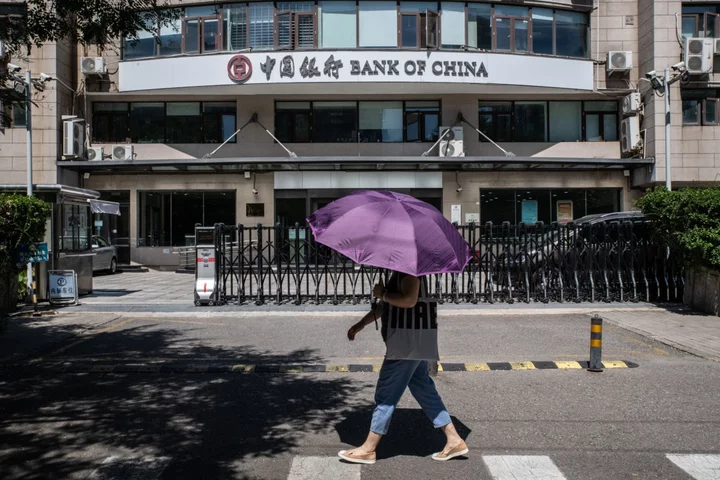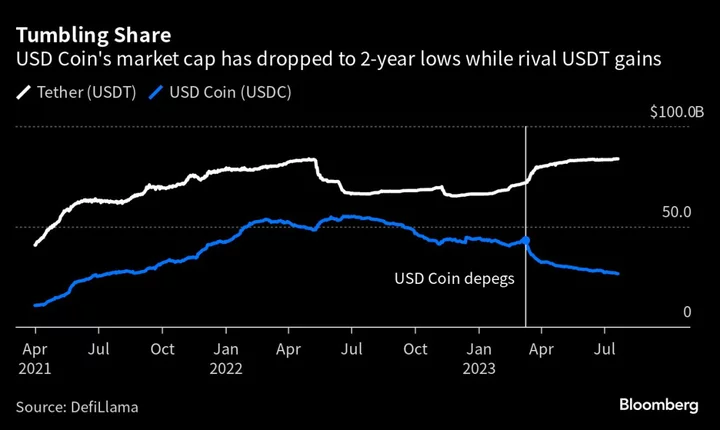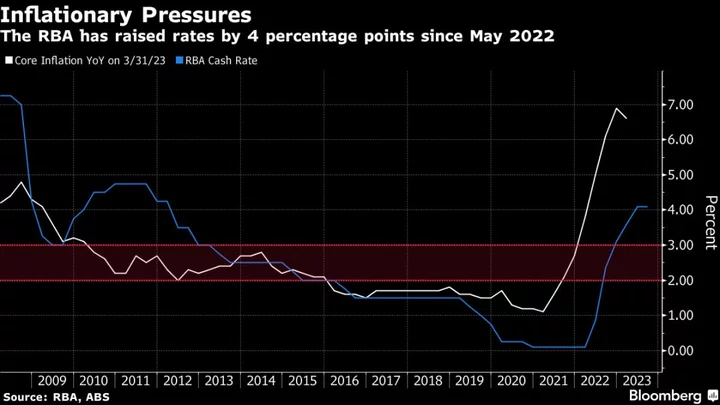China’s central bank cut the amount of cash lenders must hold in reserve for the second time this year, a move that will help banks support government spending and Beijing’s broader effort to stoke economic growth.
The People’s Bank of China lowered the reserve requirement ratio for most banks by 25 basis points, in a statement Thursday. The weighted average RRR for banks will be 7.4% after the reduction, effective Friday.
The move will boost banks’ lending capacity and “facilitate fiscal stimulus,” especially local government bond issuance, said Duncan Wrigley, chief China economist at Pantheon Macroeconomics.
China’s local governments have been rushing to issue their quota of so-called special bonds used mainly to finance infrastructure projects before a September deadline. Provincial governments sold the biggest amount of special bonds in more than a year in August, according to Bloomberg calculations.
The PBOC last lowered the reserve ratio by 25 basis points for most banks in March. As banks dominate China’s debt market, large-scale bond issuance can affect their liquidity. There’ll now be “reasonably ample” liquidity in the banking system, the PBOC said in the statement.
The reduction could free up as much as 500 billion yuan ($69 billion) in the interbank market, according to Pantheon and Goldman Sachs Group Inc.
Goldman Sachs continues to expect further policy easing from China after Thursday’s move, including another RRR cut of another quarter point and a 10-basis point policy interest-rate reduction in the final quarter of 2023, according to economists led by Maggie Wei and Hui Shan.
Goldman also sees an “additional 500 billion yuan of local government special bond issuance quota to be utilized in Q4 this year, and further property policy easing such as relaxation of home purchase restrictions and cuts to down-payment ratios in large cities.”
Friday Rollover?
China’s post-Covid recovery has been losing momentum since a rebound in the first quarter, with July data showing a large drop in property sales and slower consumer spending.
Some more recent indicators including inflation and exports point to a potential stabilization in the economy, though most economists think the impact from recent stimulus and property easing measures won’t be seen until later this year.
The PBOC in August stepped up policy support with a surprise reduction to the rate on its one-year loans — or medium-term lending facility — the second cut this year.
Most economists expect the PBOC to keep that rate unchanged when it next announces it on Friday. It may choose to fully roll over 400 billion yuan in MLF maturing that day, as they did in March, according to Goldman.
Growth Target
Beijing’s next big step is expected to be a “more proactive” fiscal policy, possibly in the fourth quarter, according to Zhang Zhiwei, chief economist at Pinpoint Asset Management Ltd.
“Next year, most likely fiscal policy will become more aggressive,” Zhang said.
The government set a fairly conservative economic growth target of around 5% for this year, which economists expect will be met.
“The move suggests that the PBoC’s monetary policy easing could stay bold in the remainder of this year,” said Becky Liu, head of China macro strategy at Standard Chartered Plc. The bank may further cut RRR and policy rates in the fourth quarter, with banks possibly lowering loan rates for prime customers next week, she added.
Taking Stock
Citigroup Inc. has a different view.
“Further rate cuts may not be imminently necessary, especially with property easing steadily ongoing and fiscal policy gathering momentum,” Citi economists led by Xiangrong Yu wrote in a note. “With the latest acceleration in policy implementation, policymakers could be assessing the effects carefully before further moves.”
--With assistance from Yujing Liu, Tom Hancock, Fran Wang and Jacob Gu.
(Updates economists’ analysis throughout.)









